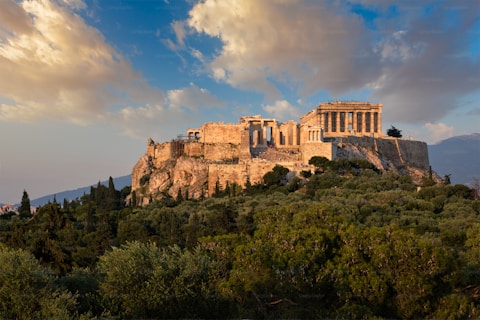Art & Disaster: Aegean – Akrotiri
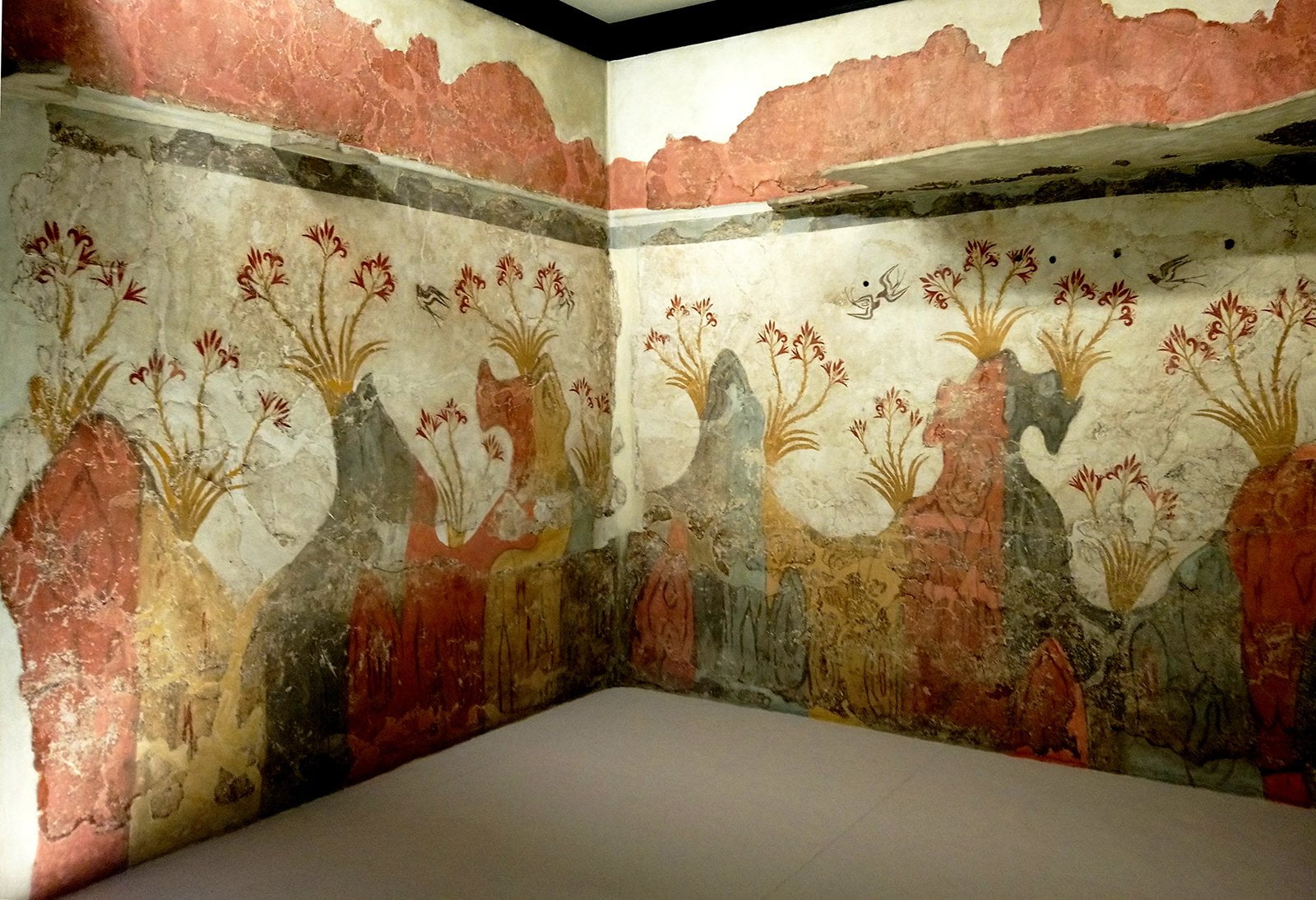
Wonderful – isn’t it? – And quite astonishing, too!

Spring Fresco Photo Credit: Nota Karamaouna
What you are looking at is an extraordinary wall-painting from Prehistoric Aegean, the famous Spring Fresco: beautiful lily flowers bloom in pairs from multi-colored rock formations while swallows are flying among them.
To be more exact, the painting – now on display in the Archaeological Museum of Athens – is from the ground floor of a private house in the Prehistoric settlement of Santorini in the Cyclades dating to about 1,700 BCE. The place, located at the Southern part of the modern island, is known to archaeologists as the location of the thriving town of Akrotiri, which flourished in the Middle Bronze Age, let’s say after 2,000 BCE.
Akrotiri in Santorini
But let me explain: Akrotiri was at first a small village of farmers and fishermen, just one among several which existed at that time on the islands. Nevertheless, contrary to other places, it rapidly expanded and developed into a flourishing settlement with a dynamic role in seafaring and metalworking, before becoming remarkably urbanized with many public buildings and private houses – some two-story house-walls are still standing –, paved streets and an extensive drainage-sewage network. At this point, its population was engaged in various crafts and in maritime trade with the Aegean islands, nearby Minoan Crete, and also further beyond with Egypt and the Middle East. But its existence came to a sudden end at some point around 1,600 BCE due to the massive eruption of the island’s volcano.
Why is it so well-preserved?
In other words, the city was destroyed but remained extremely well-preserved, thanks to being covered by many layers of volcanic ash
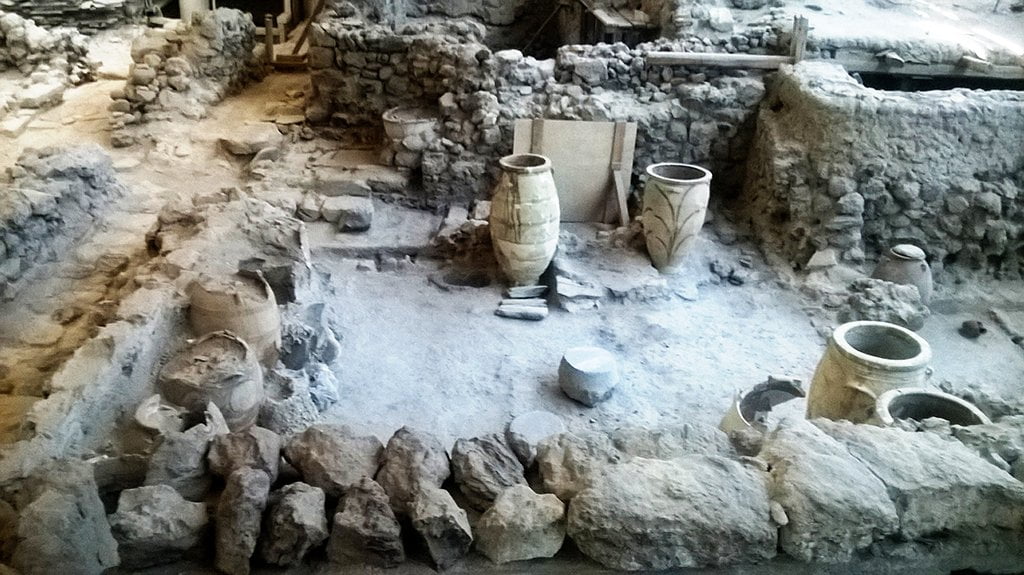
Akrotiri Excavated Site Photo Credit: Nota Karamaouna
Does this episode remind you of anything?
Broadly speaking, what happened to Akrotiri was quite similar to the events at better-known Pompeii in 79 CE. The image of a fossilized town was unfolded only in the late 1960s and it was a remarkable archaeological surprise. But, unlike Pompeii, at Akrotiri there were no casualties and there is evidence of earthquake destructions, giving alert, before the eruption: thus the residents had already fled their town before the final disaster.
Objects found at Akrotiri
Excavations have revealed lots of fascinating objects and works of art, including many painted vases. They usually depict plants and animal motifs (lily, ivy, papyrus, ibex, deer, goat, dolphin, swallow, sea-gull); scenes full of movement and vitality with striking colors.
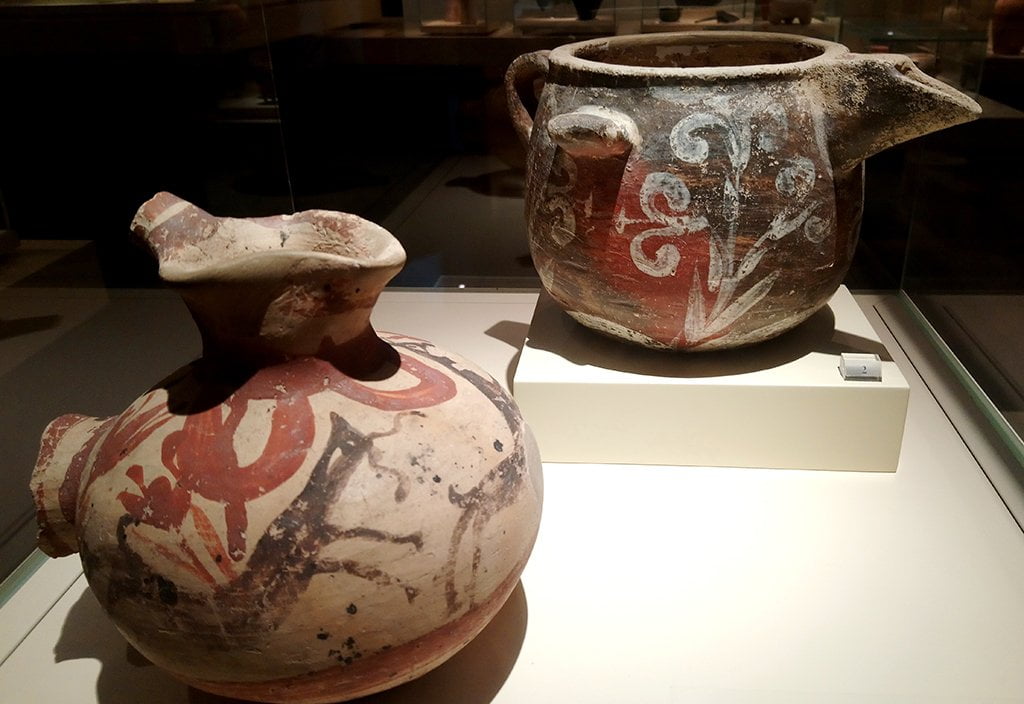
Painted Vases Photo Credit: Nota Karamaouna
Among the finds are of course the famous Akrotiri frescoes decorating many of the buildings and dating back some 3,700 years from present. Local themes (fishermen, boxing boys or girls gathering saffron), fantastical imagery (blue monkeys) or landscape and animal scenes covered many rooms indicating a particular love for nature and especially for lilies and birds – which hold a rather prominent position. On our painting, the highly stylized red lilies are rhythmically arranged atop the playful rocks which are painted in blue, red and yellow vertical bands.
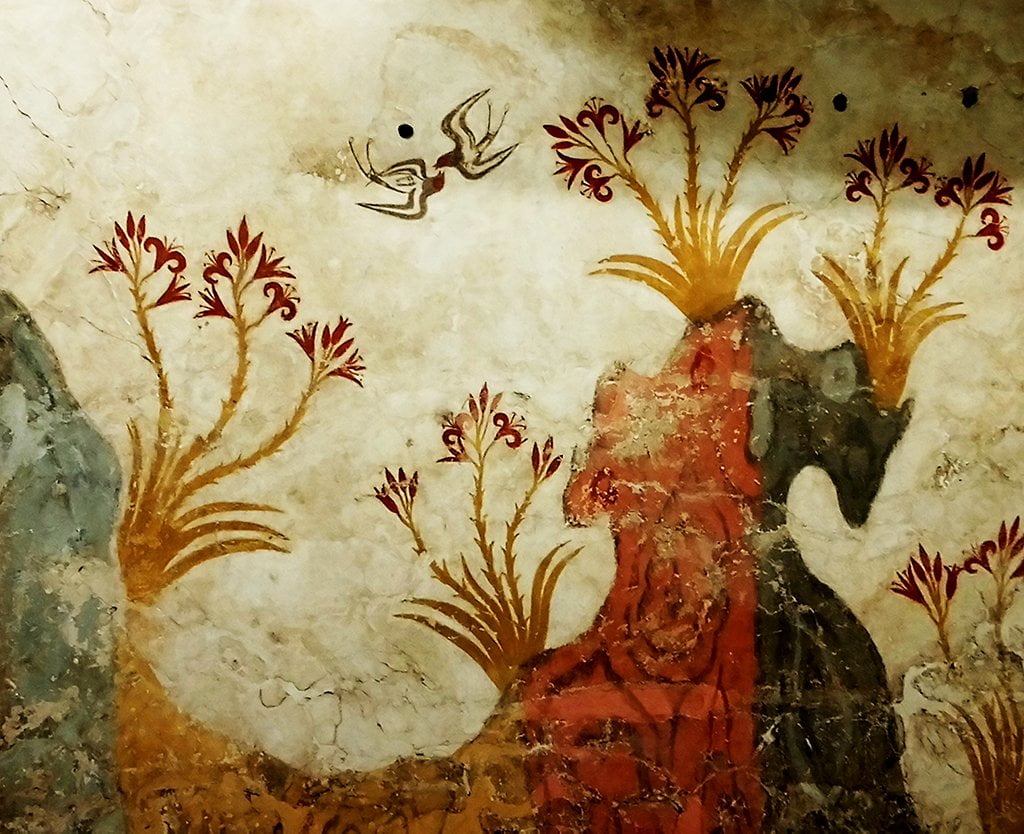
Spring Fresco Detail Photo Credit: Nota Karamaouna
Taking a closer look at the frescoes
But then, there is something more that is not immediately apparent. At a closer look, what we see are not just few flowers growing from the earth, but lilies depicted in various stages of the cycle of life. We see lilies growing with closed buds and then half-open as they blossom, then finally as fully-open flowers with curved petals. Additionally, the swallows at first stage may flirt or perhaps they may feed their fledglings that have just learned to fly. Then at a second stage we see individual birds flying independently throughout the lilies perhaps looking for food or for mates.
Thus, slight modifications to the image of a seemingly simple spring scene are conveying the message of a well-known story: how things grow! Maybe what we are looking at is a symbolic tale of all life – birth and renewal – in which nature plays a central part, contributing to the well-being and eventual flourishing of Acrotiri’s cosmopolitan society.
Author: Nota Karamaouna (Archaeologist and Licensed Guide)
Feeling Ready?
From our blog
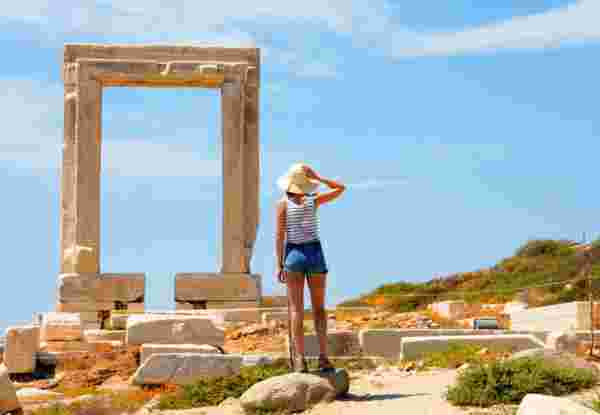
Honeymoon in Naxos: A Complete Guide
READ MORE
Visiting Athens with Kids: A helpful Guide
READ MORE
Paros for Seniors: Tips and Itinerary
READ MORE
Best Resorts in Greece for Families: Your Ultimate 2025 Guide
READ MORE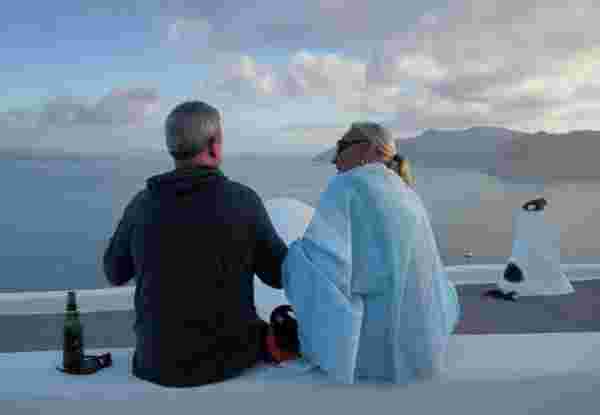
How to Enjoy Santorini for Seniors
READ MORE
Honeymoon in Paros Island
READ MORE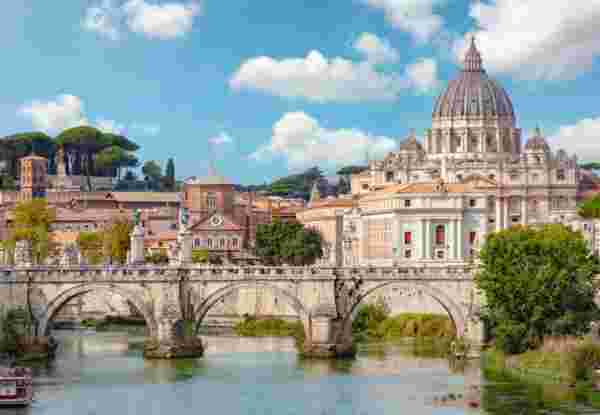
Rome Travel Guide: What to Do, When to go and Where to Go
READ MORE
The Best Greek Islands for Couples, According to a Luxury DMC
READ MORE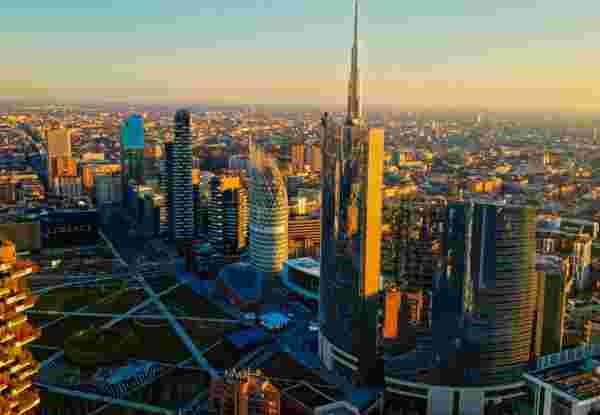
Discover Milan: Top Attractions
READ MORE
